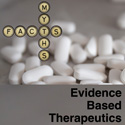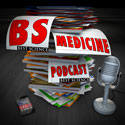Episode 83: Gabapentin and bioidentical hormones – a look at ALL the data
In episode 83, Mike and James tackle two very different and difficult areas of controversy. Mike looks at the data surrounding the use of gabapentin and off-label uses including chronic pain, and James tackles the lack of data surrounding the use of bioidentical hormones. At the end of the podcast James develops breast tenderness and complains so much that Mike decides to take gabapentin for the pain associated with James’ complaining.
Show notes
1) Off-label trials of gabapentin
2) CIHR trials
3) Gabapentin for pain
Therapeutics Initiative Letter 2009 (July – Dec)
4) Pregabalin
5) Systematic review of bioidentical hormones


